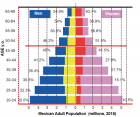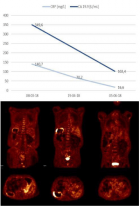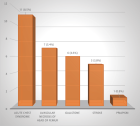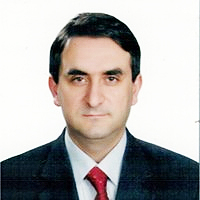Table of Contents
Pre-eminence and comparative analysis of skin and surface disinfectants: A systematic review to pave the way for SARS-CoV-2 prevention
Published on: 29th April, 2021
OCLC Number/Unique Identifier: 9023195512
More than 200 countries have been devastated by the SARS-CoV-2 pandemic. The health workers exposed to SARS patients have been confirmed to be infected with coronavirus (SARS-CoV-2), regardless of the degree of their exposure. The increasing complexity of virus existence and heterogeneity has cast doubt on disinfectants as a viable choice. Hence, the present systematic review aims to achieve the comparative analysis of established disinfectants against enveloped and non-enveloped viruses including SARS-CoV and MERS-CoV. Three databases (Pubmed, Google scholar, and Medline) were searched to frame the systematic review. Our comparative analyses with 34 studies have found that 85% ethanol-based hand sanitizers and 7.5% Povidine Iodine based soaps/surgical scrub could be used to deter the SARS-CoV-2 virus as preferred hand sanitizers. For surface eradication, 0.5% sodium hypochlorite or a mixture of glutaraldehyde, Quaternary Ammonium Compounds (QAC), and isopropanol could have more efficacies as compared to hydrogen peroxide, phenol, and QAC alone. Moreover, the accelerated hydrogen peroxide as an active ingredient in the automatic quick surface disinfectant (tunnel system), maybe a positive indication for quick whole-body sanitation. Additionally, the alternative method for avoiding the rapidly increasing chain of infection with SARS and restarting regular life has been exclusively discussed.
A systemic review on various pertinences and simulations of rotavirus
Published on: 28th April, 2021
OCLC Number/Unique Identifier: 9023206447
Rotavirus induced disease are a main source of dreadful, serious and drying out gastroenteritis in kids (less than five years old). Instead of the worldwide presentation of immunizations for rotavirus longer than 10 years back, rotavirus infections still result in more than 200,000 yearly passings, generally in developing countries. Rotavirus basically infects enterocytes and cause diarrheal through the demolition of absorptive enterocytes. Intestinal secretions are invigorated by rotavirus (non-auxiliary/structural protein) to enactment of the enteric sensory system. Rotavirus diseases can prompt viraemia and antigenaemia (term related with more serious indications of intense gastroenteritis). Rotavirus reinfections are regular throughout the life, even though the sickness seriousness is diminished with rehash contaminations. The resistant relates of assurance against rotavirus reinfection and recuperation from disease is inadequately perceived. This study takes a step forward to the administration of rotavirus disease centers, primarily on control and cure of dehydration, even though the utilization of antiviral and hostile to purgative medications can be demonstrated at some cases.
Impact of COVID-19 pandemic on anti-microbial resistance and secondary microbial infections
Published on: 25th February, 2021
OCLC Number/Unique Identifier: 9031335484
Corona Virus Disease-2019 (COVID-19) has become one of the most serious diseases in the history of mankind. It has captured the entire world and solutions are yet to be discovered to fight this global crisis. The outcomes of COVID-19 are influenced by a variety of pre-existing factors. The secondary microbial infections are one of the prominent ones that are major contributors for Antimicrobial Resistance (AMR) as they warrant the use of antimicrobial medications. The present review aimed at exploring the potential relationship between AMR under such circumstances and COVID-19 related outcomes. The published literature across the globe has delineated that the impact of COVID-19 may have worsened by a great degree due to the presence of secondary infections majorly bacterial ones. The consequences of COVID-19 have been fatal and a significant proportion can be a major attributor to AMR, either directly or indirectly. Although, there is a dearth of studies that can establish a very strong and direct relationship between AMR and negative COVID-19 outcomes so in-depth research on this topic is required to further explain this relationship in detail.
COVID-19 New variant and air pollution relationship: how airborne mutagens agent can act on genoma viruses expression: Hypothesis of work
Published on: 16th February, 2021
OCLC Number/Unique Identifier: 9031333670
Before actual COVID-19 pandemia coronavirus was not so dangerous like now.
In December 2019 - January 2020 in Wuhan first and then in other places this coronavirus was responsible of a first wave of severe pulmonitis responsible of many deaths.
Wuhan and other region involved first was high level air polluted and industrial area.
New COVID-19 variant in last part of 2020 and in first month of 2021 was responsible of great diffusion of this pandemic disease.
UK, South Africa and brasilian new variant show higher diffusion then the first wave of COVID-19.
Aim of this work is to analyze relationship with air pollution and the possibility that mutagen substantia inside of this microenvironment can produce new variant trough an genetic pressure process.
RNA viruses are normally subjected by natural mutation but some phenomena can contribute to accelerate this process and their airborne – aeresols microenvironment is relevant.
Some air pollutants are recognized as mutagen factors by literature.
Living with ‘Long COVID-19’: The long-term complications and sequelae
Published on: 16th February, 2021
OCLC Number/Unique Identifier: 9031344522
Introduction - the perennial pandemic: It is being increasingly realised that the COVID-19 may have become the new reality associated with human existence world over and the mankind may have to live with it for years or even decades. Further, the grievous nature of the disease is evolving further with the genomic changes in the virus in form of mutations and evolution of variants, with enhanced infectivity and probably virulence. There are serious challenges posed by the SARS-CoV-2 virus and COVID-19 as the disease.
COVID-19 as acute and chronic disease: On exposure to the SARS-CoV-2 virus, not all patients develop a disease. Further, for those who develop the disease, there is a large variation in disease severity. The known factors including the constituent factors and several still unknown factors influence the disease manifestations, its course, and later the convalescent phase as well. In fact, substantial continuing morbidity after resolution of the infection indicates persisting multisystem effects of COVID-19.
The ‘long COVID-19’ or ‘long haulers’: The patients who continue to suffer with persisting symptoms have been described as long haulers and the clinical condition has been called post-COVID-19 or ‘long COVID-19’. The diagnosis should be entertained if various symptoms and signs linger well beyond the period of convalescence in COVID-19. With the chronicity, there occur inflammatory changes and damage in various organs, and the extent of organ damage determines the long-term effects.
Management of ‘long COVID’ syndrome: The ‘long COVID’ syndrome has multi-system involvement, variable presentation, and unpredictable course. Following clinical and investigational assessment, the patients should be managed as per clinical manifestations, extent of organ damage and associated complications. The findings from various studies indicate that preventing further organ damage in ‘long COVID’ is crucial.
The long COVID’s prognostic challenges: As apparent, the ‘long COVID’ afflictions are more common than realized earlier. The symptoms can escalate in patients with co-morbid conditions. The persistent symptoms among COVID-19 survivors pose new challenges to the healthcare providers and may be suitably managed with a combination of pharmacological and non-pharmacological treatments, and holistic healthcare.
Exploring COVID-19: Relating the spike protein to infectivity, pathogenicity and Immunogenicity
Published on: 27th January, 2021
OCLC Number/Unique Identifier: 8906007931
Introduction: SARS-CoV-2 life cycle: The disease which reportedly began in Chinese city Wuhan in November-December 2019 manifesting as severe respiratory illness, soon spread to various parts of the world, and was named COVID-19, and declared a pandemic by WHO. The life cycle of SARS-CoV-2 begins with membrane fusion mediated by Spike (S) protein binding to the ACE2 receptors. Following viral entry and release of genome into the host cell cytoplasm there occurs replication and transcription to generate viral structural and non-structural proteins. Finally, VLPs are produced and the mature virions are released from the host cell.
Immunogenicity of the spike protein: The S protein is considered the main antigenic component among structural proteins of SARS-CoV-2 and responsible for inducing the host immune response. The neutralising antibodies (nAbs) targeting the S protein are produced and may confer a protective immunity against the viral infection. Further, the role of the S protein in infectivity also makes it an important tool for diagnostic antigen-based testing and vaccine development. The S-specific antibodies, memory B and circulating TFH cells are consistently elicited following SARS-CoV-2 infection, and COVID-19 vaccine shots in clinical trials.
The emerging SARS-CoV-2 variants: The early genomic variations in SARS-CoV-2 have gone almost unnoticed having lacked an impact on disease transmission or its clinical course. Some of the recently discovered mutations, however, have impact on transmissibility, infectivity, or immune response. One such mutation is the D614G variant, which has increased in prevalence to currently become the dominant variant world-over. Another, relatively new variant, named VUI-202012/01 or B.1.1.7 has acquired 17 genomic alterations and carries the risk of enhanced infectivity. Further, its potential impact on vaccine efficacy is a worrisome issue.
Conclusion: THE UNMET CHALLENGES: COVID-19 as a disease and SARS-CoV-2 as its causative organism, continue to remain an enigma. While we continue to explore the agent factors, disease transmission dynamics, pathogenesis and clinical spectrum of the disease, and therapeutic modalities, the grievous nature of the disease has led to emergency authorizations for COVID-19 vaccines in various countries. Further, the virus may continue to persist and afflict for years to come, as future course of the disease is linked to certain unknown factors like effects of seasonality on virus transmission and unpredictable nature of immune response to the disease.

If you are already a member of our network and need to keep track of any developments regarding a question you have already submitted, click "take me to my Query."
















































































































































